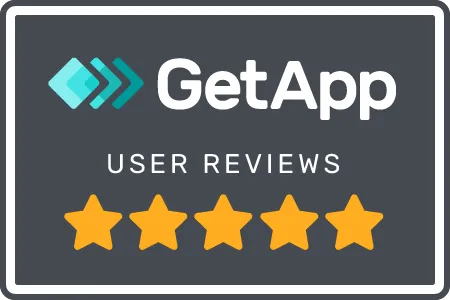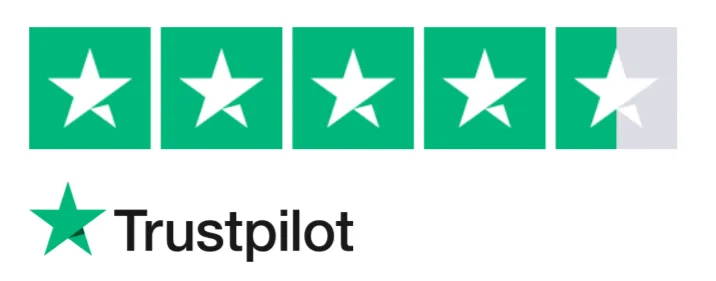In the digital age, where information is often just a click away, the ability to quickly access, search, and analyze text data has become increasingly important. However, when it comes to certain file types like PDFs, extracting and manipulating text or tables isn't always straightforward. This is where PDF OCR comes into play.
In this article, we will dig deep into the world of PDF OCR. We will explore what it is, how it works, and why it's a must-have for businesses. We'll also review some of the top PDF OCR tools on the market and discuss the future trends of this cutting-edge technology.
Understanding PDF Files
Adobe Systems first introduced the Portable Document Format (PDF) in 1993, and the International Organization for Standardization (ISO) 32000 standard later followed.
Did you know there are more than 2.5 trillion PDFs today?
How many types of PDFs are there?
Over the years, PDFs have evolved into different versions with improved features and capabilities.
| Types of PDFs | Description |
|---|---|
| Standard PDF format | |
| PDF/A | Used for long-term storage |
| PDF/E | Used for engineering and construction documents |
| PDF/X | Used for graphic designing and printing |
| PDF/VT | Stand for variable and transactional printing. Has more advanced customization than PDF/X |
| PDF/UA | Stand for universal accessibility. Helps to improve the user experience for people with disabilities |
Challenges of manually extracting text from PDFs
PDF documents are widely used in various industries for storing and sharing information. Unfortunately, despite the advent of technology, some companies still perform manual data entry tasks.
As a result, only 12% are able to take action on their data insights automatically.
When you first start a business, since you don't have many documents, the manual data entry tasks won't take much time. But as you grow, so do those documents! Spending time and resources on tasks that can be automated is not worth it.
In 1992, George Labovitz and Yu Sang Chang introduced the 1-10-100 rule to assess the impact of bad data. It takes $1 to verify data, $10 to correct incorrect data and &100 when the data hasn't been cleaned.
You cannot avoid human errors with manual data entry. Human error rates usually hover around 1%. This leads to inconsistencies in data accuracy which can lead to compliance and financial issues and, unhappy customers.
OCR for automating data extraction
From the 1990s to the 2000s, optical character recognition (OCR) technology gained popularity for automating manual processes in several industries, such as healthcare, and financial services.
Google Books was launched to scan and convert books and magazines using OCR.
How does OCR work?
OCR technology converts images, scanned PDFs, and handwritten text into machine-readable text. There are mainly 3 stages in the OCR process:
- Preprocessing: The OCR software prepares the document using techniques such as noise removal, deskewing, and rescaling.
- Character/text recognition: Pattern and feature recognition are two methods that are used to identify text in a document.
- Post-processing: Data is converted into structured text.
Read more on what is OCR
Challenges of traditional OCR
Traditional OCR or regular OCR extracts data into plain text only, which means that this data cannot be sent to another application.
OCR technology may not recognize complex formatting, such as tables, charts, or graphics, and may require additional processing to extract this information.
It can be difficult to extract data accurately from documents that have different layouts and formats. About 10-15% of the data will always be missing or inaccurate.
What is PDF OCR? Combining PDF and OCR
PDF OCR converts data into searchable and editable data. It uses advanced algorithms such as machine learning (ML), computer vision, natural language processing (NLP) and artificial intelligence (AI) to extract data accurately.
Types of PDF OCR
To counter the limitations of traditional OCR, there have been advanced OCR technologies such as Zonal OCR and AI OCR.
Zonal OCR
Referred to as the second generation of OCR, Zonal OCR extracts data from specific "zones" in a document. Unlike a regular OCR tool, it can convert unstructured text into structured data
Read more on what is Zonal OCR
Dynamic OCR
Parseur has created dynamic OCR to extract fields that move throughout a document or vary in size. For example, fields such as "total" or "grand total" do not stay in a fixed position.
Read more on what is Dynamic OCR
AI OCR
OCR tools powered by AI can leverage advanced technologies such as deep learning, leading to fast data extraction and processing. They have the ability to handle large amounts of data. Combining OCR and AI has improved the data capture process to a large extent.
Read more on what is AI OCR
Why should you use PDF OCR?
Automating data extraction with PDF OCR will help your business be more cost-effective. Let's take a look at the benefits of PDF OCR below.
Reduces time spent on manual data entry tasks
One of the major advantages is that you eliminate the manual processing of information. Your employees no longer have to spend hours looking for specific data, copying and pasting that data into another database. This process will be fully automated!
Converts PDF files into editable formats
With PDF OCR, scanned documents or image-based PDFs are automatically converted into searchable versions. This increases efficiency when searching for specific keywords.
Integrates seamlessly with existing databases and other applications
You can connect the PDF OCR to thousands of other tools such as Zapier, Power Automate, Zoho CRM, or ERP software. You can also send data via Webhook or a custom API.
Use cases of PDF OCR
PDF OCR is a valuable tool for any organization that wants to streamline its processes.
Invoice processing
Digitizing paper-based invoices using PDF OCR technology can help businesses maintain better records and make it easier to track invoices and payments.
Data from scanned invoices can be automatically sent to QuickBooks or any other accounting software.
Further reading
How to automate invoice processing
Bill of lading
PDF OCR technology can help businesses streamline their BOL processes and improve accuracy, efficiency, and communication. This can lead to significant cost savings and other benefits for businesses that rely on shipping and logistics to operate.
E-commerce
It can help improve the accuracy and speed of order processing by automating data extraction from purchase orders, invoices, and shipping documents. This can help businesses process orders more quickly and efficiently, reducing the time it takes to fulfil orders and improving customer satisfaction.
Factors to consider when choosing a PDF OCR tool
You can find any data extraction tool on the internet, but, it's important to invest in one that meets your business needs and budget.
- Does it have a high accuracy rate?
- Does it support multiple languages?
- Is it low-code, no-code or requires technical knowledge?
- Can it be integrated with any application?
- Is it an advanced PDF OCR software?
The best PDF OCR tools in 2026
We've compiled a list of the 5 top PDF OCR software to look out for this year.
Parseur
Parseur goes beyond OCR with its powerful AI engine to extract data from PDFs with a high level of accuracy.
- It supports 100+ languages
- It has AI-assisted templates for different industries
- It is integrated with Zonal OCR and Dynamic OCR
- It can recognize handwritten text and alphabet
- It has a powerful template-based platform
- It has native integration with Zapier, Make and Power Automate
- It can also extract data from emails automatically
- It can extract tabular data and repetitive blocks of text
View all Parseur features
Parseur has a free plan with all the features available. The paid plans are 3x less expensive than other software.
Compare Parseur with other PDF parsers
Happy Customer
We have used Parseur for several years now. Of all SaaS applications we use, and that is a lot, Parseur is one of the few without any downtime. Combined with excellent support, I can only recommend Parseur from A to Z.
Adobe Acrobat Pro
It is a popular PDF editor with OCR capabilities that converts scanned files into editable formats. It can recognize any text and formatting and also has multi-language support.
ABBYY FineReader PDF
ABBYY has an AI-based OCR technology that can digitize and scan paper documents. It is compatible with Windows, macOS, and mobile devices and has an easy-to-use user interface. It also has a screenshot reader that converts screenshots into text.
Readiris
Readiris is a global solution to convert, edit and sign documents. It is intelligent OCR software for both Windows and Mac OS. It can also convert documents into audio files with its verbal recognition feature.
Google Document AI
Document AI's OCR technology is used to convert scanned or digital documents into searchable and editable text. It has pre-trained models integrated with OCR for document processing and data extraction.
The future of PDF OCR
PDF OCR tools integrated with AI can easily bridge the gap between static documents and editable files. With the continuous advancement in AI, we will definitely see more sophisticated software revolutionizing the data extraction process.
Last updated on




